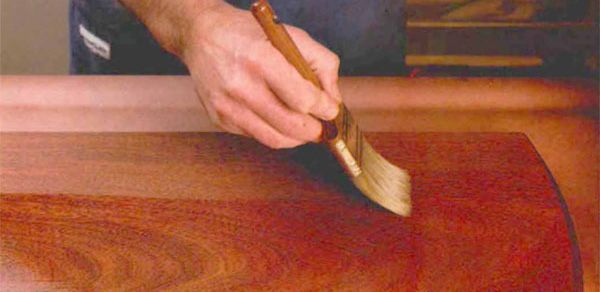All About Sealing and Priming

Most finishes are self-sealing, meaning that the first coat that goes on the wood soaks in, dries, and does the job of preparing it for subsequent coats of finish just fine. But there are three reasons to consider using another type of finish as the sealer coat:
The Basics:
• Selecting a sealer: Your choices are oils, shellac, lacquer sanding sealer, and vinyl sanding sealer
• The function of primers: When to use them, and what to use
Selecting a sealer
No matter what topcoat you intend to use, any of the true oils make good sealers for highly figured woods because they highlight the figure better, and they darken the color of the wood. Boiled linseed oil and tung oil are both good choices, but it’s important to let them dry thoroughly before proceeding to the next layer of finish. In dry, warm weather, overnight is usually enough time for them to set; but in humid or cool conditions, you might want to wait longer.
Shellac bonds extremely well to raw wood and to other finishes. One of the darker varieties of shellac, such as seedlac or garnet, will also serve to add some depth of color to all woods, light and dark. A layer of shellac will also make the wood fibers fairly impervious to absorbing additional finishes, so it works as a good first step to building a film finish over it. When used as a sealer under other finishes, it’s important to use dewaxed shellac; otherwise you may have problems with other finishes not bonding well to the shellac seal coat.
If the final goal is to build a healthy lacquer film capable of being rubbed out to a high polish, lacquer sanding sealer is the best choice. It has a high solids content, and stearates have been added to it to facilitate sanding the finish smooth after it has dried. Sanding sealer is not a substitute for filler, but it goes on so thick that once it has been sanded out (220-grit, open-coat silicon carbide paper works best for this purpose), the sanding sealer does partially fill open grain.
Enhanced moisture resistance in the big benefit to using a vinyl sanding sealer. It is a good choice for sealing any projects that will be finished with CAB-acrylic lacquer, or most of the catalyzed lacquers and conversion varnishes. And it is especially appropriate for kitchen or bathroom cabinets that will be subjected to the abuse of a a moisture-laden environment.
The function of primers
Primers bond tightly to raw wood and to other finishes, and they’re used under any kind of pigmented finish, such as paint or lacquer. You can buy primers made with shellac-, oil-, lacquer-, or water-based formulations, and it’s best to match each of those to the intended top coat of your choice.
Fine Woodworking Recommended Products

Osmo Polyx-Oil

Waterlox Original






















Log in or create an account to post a comment.
Sign up Log in